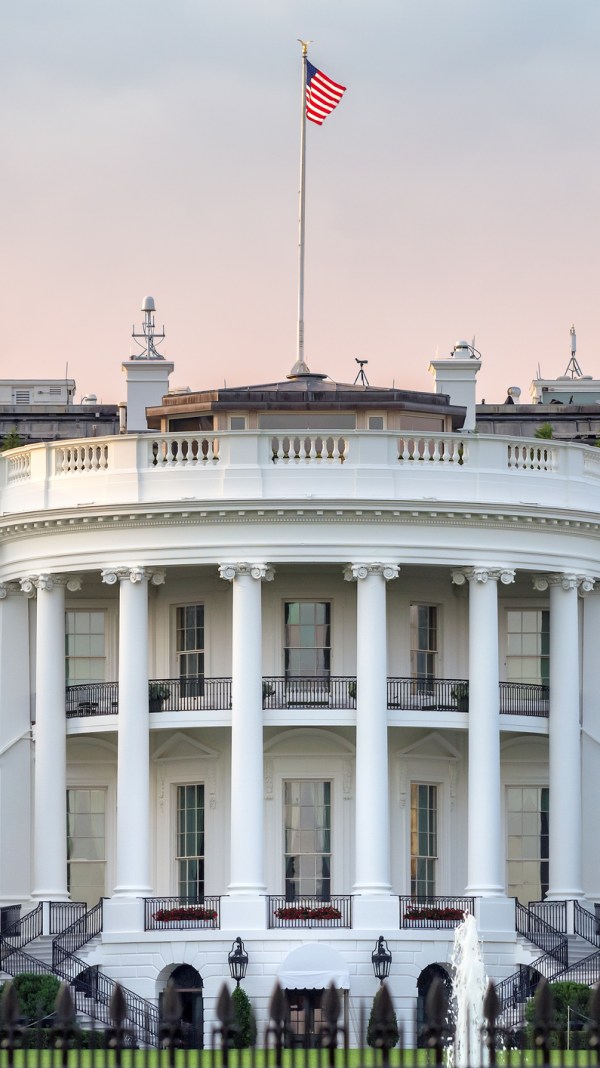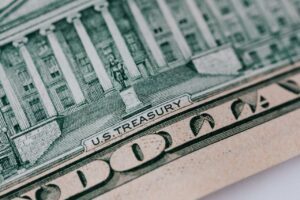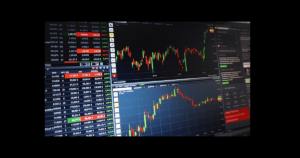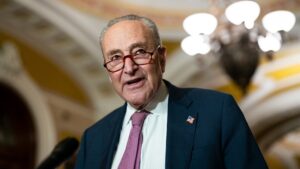Update: January 19, 2024: Today the Biden-Harris Administration announced an additional $4.9 billion in student debt relief for 73,600 borrowers. This additional debt relief will go to teachers, social workers, and other public servants like firefighters and nurses who have qualified for Public Service Loan Forgiveness (PSLF). This relief also includes borrowers qualifying for income-driven repayment (IDR) forgiveness whose were not being accurately accounted for.
Update: July 18, 2023: Two weeks following the Supreme Court striking down President Biden’s debt relief plan, the Biden-Harris Administration announced plans to provide 804,000 borrowers with 39 Billion in automatic loan forgiveness. The Department of Education announced they will automatically discharge certain Federal student loans in income-driven repayment (IDR) plans as part of the plan announced by Biden Harris in 2022.
Who is Eligible for Loan Forgiveness?
Borrowers who have Federal student loans in income-driven repayment (IDR) plans, and have accumulated the equivalent of either 20 or 25 years of qualified payments, will receive loan forgiveness for the remaining balance.
What Type of Loans are Eligible for Forgiveness?
Borrowers receiving notifications of loan forgiveness include those with Direct loans or Federal Family Education Loans held by the Department of Education (including Parent Plus loans of either type) who have reached the necessary forgiveness threshold as a result of receiving credit toward IDR forgiveness of any of the following periods:
- Any month in which a borrower was in a repayment status, regardless of whether payments were partial or late, the type of loan, or the repayment plan;
- Any period in which a borrower spent 12 or more consecutive months in forbearance;
- Any month in forbearance for borrowers who spent 36 or more cumulative months in forbearance;
- Any month spent in deferment (except for in-school deferment) prior to 2013; and
- Any month spent in economic hardship or military deferments on or after January 1, 2013.
In addition, months described above that occurred prior to a loan consolidation will also be counted toward forgiveness.
What Do I Need to Do if I am Eligible for Forgiveness?
If you are an eligible borrower you will not need to apply for forgiveness. Your debt will be automatically forgiven. The Department of Education will automatically start to inform eligible borrowers via email.
When Would the Discharge of My Loan Begin?
Discharges will begin 300 days after email notifications are sent. If you receive forgiveness, repayment of your loan will be paused until the discharge is processed.
What Other Types of Student Loan Debt Relief are Available?
President Biden and the Department of Education have also taken steps to provide access to affordable payments through the Saving on a Valuable Education (SAVE) plan, which will cut payments on undergraduate loans in half compared to other IDR plans and ensure borrowers’ balances don’t grow if they keep up on payments. A single borrower making less than $15 an hour will not have to make payments. Benefits under the SAVE plan will be available this summer.
Update: June 30, 2023: The Supreme Court blocked President Biden’s plan to forgive up to $10,000 in federal student loans used to pay for college and other post-secondary education and up to $20,000 for recipients of Pell Grants.
Update: June 14, 2023: The U.S. Department of Education announced that Congress recently passed a law that would prevent further extension of the student loan payment pause. As a result, student loan interest will resume starting on September 1, 2023, and payments will be due starting October 2023.
Update: November 22, 2022: Today the Biden-Harris Administration announced another extension to the payment pause on student loan payments which could go through August 2023. The most recent extension of the pause was set to end Dec 31, 2022, but Biden’s one-time student loan forgiveness program was blocked, so the pause was extended again. That means if blocks to Biden’s student loan debt cancellation are not resolved by June 30, 2023, student loan payments and interest will resume 60 days from June 30, through August 2023. Check back with the TurboTax blog for more up to date information regarding student loan debt.
Update: October 21, 2022: A federal appeals court has temporarily blocked Biden’s student loan forgiveness plan following an emergency motion for an administration stay which prohibits discharging any student loan debt under the cancellation plan. While the court’s ruling is temporary, the current forgiveness timeline is frozen until the court’s briefing is due next week on the matter. If the court decides not to impose an injunction, the implementation will continue, if an injunction is imposed, loan forgiveness could be blocked while proceedings continue. The online application for student loan forgiveness is still live and you can still apply for student loan debt relief. The administration can still collect applications during the stay. Remember when applying, only apply on the Federal Student Aid website. Check back with the TurboTax blog for more up to date information.
Update: October 15, 2022: The Department of Education has begun beta testing the student debt relief website. Borrowers are able to submit applications for the Biden-Harris Administration’s student debt relief program. This application will allow borrowers to begin signing up before the formal website is released later this month. The link to the application is: https://studentaid.gov/debt-relief/application.
On August 24, 2022, President Biden, Vice President Harris, and the U.S. Department of Education announced a three part student loan debt relief plan to help federal student loan borrowers following the pandemic. The three part plan includes an extension of the pause on student loan payments, debt cancellation, and proposal to create an income-driven repayment plan to help lower future monthly payments.
You may be asking “What does the new student loan relief mean to me?” and “How do I get the student loan relief?”. Don’t worry, we have you covered. Here is a breakdown of what is in the plan and how you can get student loan debt relief.
What is in the Biden-Harris Student Debt Relief Plan?
Student Loan Payment Pause
- The student loan payment pause that was set to expire August 31, 2022 has been extended to August 31, 2023 for federal student loans. As a result, student loan interest will resume starting on September 1, 2023 and payments will be due starting October 2023.
Note the pause includes suspension of loan payments, 0% interest, and stopped collections on defaulted loans. You may also see a lower student loan interest deduction when you file your taxes if you have been taking advantage of the student loan payment pause this year.
Debt Cancellation
- Up to $10,000 in debt cancellation for federal student loans to non-Pell Grant recipients and
- Up to $20,000 in debt cancellation to Pell Grant recipients with loans held by the Department of Education if individual income is less than $125,000 and less than $250,000 for households
Borrowers employed by non-profit organizations, the military, or federal, state, tribal or local government may be eligible to have all of their student loan debt forgiven through the Public Service Loan Forgiveness Program.
On June 30, 2023, The Supreme Court blocked President Biden’s plan to forgive up to $10,000 in federal student loans used to pay for college and other post-secondary education and up to $20,000 for recipients of Pell Grants, but certain Federal student loans in income-driven repayment plans per the update above will be automatically discharged.
Proposal to Create New Income-Driven Repayment Plan
The Biden-Harris Administration is also proposing a rule to create a new income-driven repayment plan that will substantially reduce future monthly payments for lower-and middle-income borrowers.
The new proposed plan:
- Would require the borrower to pay no more than 5% of discretionary income on undergraduate loans instead of 10% under most current income-driven repayment plans
- Would raise the income requirement for repayment guaranteeing that borrowers making under 225% of the Federal Poverty Level (about the annual equivalent of $15 minimum wage) will not have to make a monthly payment.
- Would forgive balances of $12,000 or less after 10 years of payments instead of 20 years
- Would cover borrowers unpaid monthly interest so that unlike existing income-driven repayment plans, borrowers loan balances will not grow as long as they are making monthly payments.
Do I Need to Do Anything to Receive the Pause on Student Loan Payments?
No you don’t need to do anything. The extension will be automatic.
How Do I Know If I’m Eligible for Student Loan Debt Cancellation and How Do I Get It?
On June 30, 2023, the Supreme Court blocked President Biden’s plan to forgive up to $10,000 in federal student loans used to pay for college and other post-secondary education and up to $20,000 for recipients of Pell Grants, but certain Federal loans in income-driven repayment plans will be automatically discharged per the latest update.
Check back with the TurboTax blog for more up to date information and details as additional guidance is issued.
-
Previous Post
Roth IRA: Who Can Contribute?

















